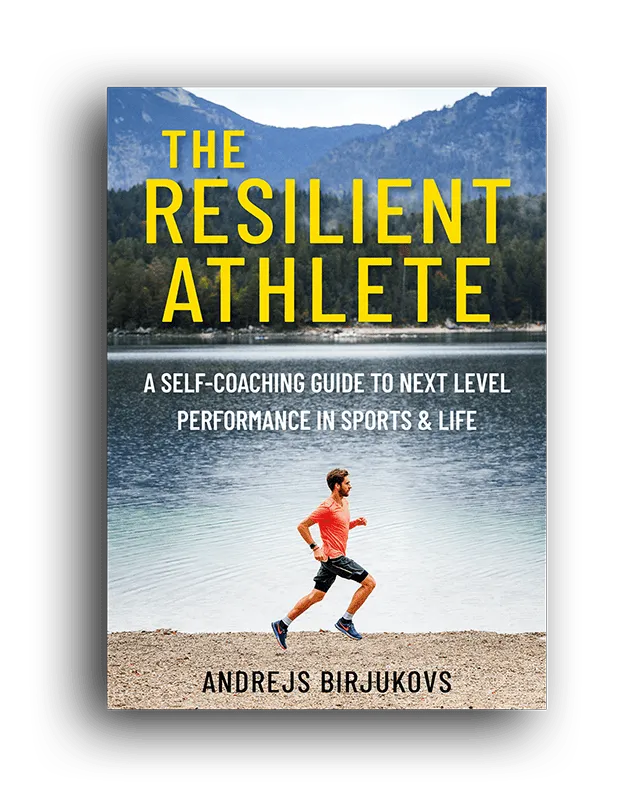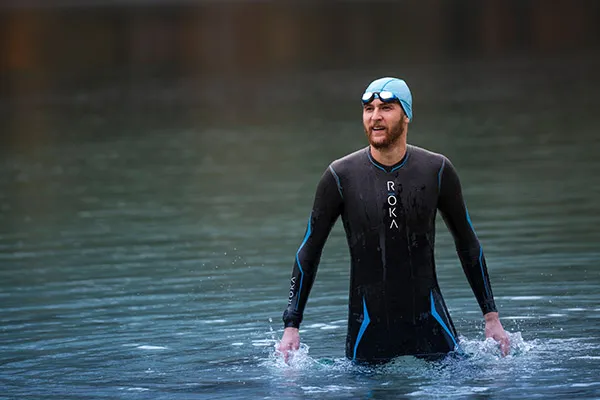How To Develop Unshakeable Confidence Through Emotional Resilience
Have you ever wondered what would it feel like to live without fear? Without doubting yourself? To have unshakeable confidence, feel unstoppable and able to conquer most aspiring dreams? There is a way to find that state – the path there lies through emotional resilience.
Think of all the great things we could achieve if we knew we couldn’t fail or at least had the guts to try. We could walk up to what could be our future spouse and strike up a friendly conversation. Or start that charity project to support animal conservation we’ve always dreamed of. Or even take a gap year to travel the world and let the road be our guide.
But there is always a but…
What if he/she would reject me? What if nobody will support me and it won’t work? How will I finance the whole trip? There is always this emotional baggage that keeps us from achieving our most desired ambitions.
Emotional resilience
This baggage is nothing more than negative emotions that prevent us from looking at the bright side and being more motivated than discouraged. It’s like a sum of all of our past experiences that acts as lens through which all new experiences are evaluated. Logically, the bigger the baggage, the more it affects the person and prevents him from developing unshakeable confidence.
Emotions tend to repeat themselves and form into specific patterns based on the situations they arise in. This increases their power and can have both positive and negative effects. We can feel at the top of the world while doing something we know we’re great at. Or we might feel anxious, hopeless or afraid when put in an unknown environment.

Each of us has had certain experiences in life that subconsciously started to define our response to what happens around. Emotional resilience, in this case, is the ability to recognize these occurrences, separate the fact from the feeling and control the response.
The secret behind unshakeable confidence is preparation and control of emotions.
It’s important to remember that emotions are nothing more than a state of mind that is created by our nervous system. That state can be impacted by various thoughts and feelings we have in response to certain situations. But that’s it.
Whatever we do is in our control. Emotions are just that – emotions. They originate in our head, which means only we have the power to control them and change our life.
How to control emotions and develop unshakeable confidence
This brings me to confidence. Or rather the unshakeable confidence. Essentially, it is defined by the way how a person deals with stress. How does he perform under pressure? Does he fall apart or thrive in the face of adversity?
Unshakeable confidence means there is nothing that can negatively affect a person’s decision or behavior in the moment, because there is no emotional attachment to it. It’s the most important factor to overcome obstacles in life.
And that’s when it overlaps with emotional resilience. People who are able to cure their emotional pain will not be as affected by external events as those who bear the weight of that baggage. They won’t be stopped by thinking ‘what if’ and instead will tackle setbacks head on. Confident people are still open for feedback and new ideas, but don’t take it personally. Instead, they thrive on it.
Confidence can sometimes be confused with self-esteem – having a large ego or just thinking a lot about oneself. In reality, having the unshakeable confidence means thinking to yourself whatever happens I can handle it.
Take the 4 steps below to become prepared and excited by what lies ahead, instead of being afraid of the uncertainty.

The Resilient Athlete
A Self-Coaching Guide to Next Level Performance in Sports & Life
Are you aiming to become a resilient athlete who is able to withstand any pressure? Be able to jump on any opportunity? Take any challenge life throws at you head on?
Then this book is for you.
Learn moreStep #1 – recognize the problem
The starting point of any self-development journey is through awareness. In this case, it’s becoming aware of which events or situations make us feel angry, anxious, fearful, ashamed or otherwise not at our best.
Having the unshakeable confidence means not letting our emotions power our life. And without finding what triggers us feeling a certain way we won’t be able to put those feelings under control.
This includes accepting the fact that we are responsible for the life we have.
While it might be tempting to blame external factors (competition, government, bad weather) for how they make us feel, it will not change the situation. The reality is that if we want our life to change, we have to change. The response to a situation is generated in OUR mind and actions WE took and decisions WE made throughout our life brought us where we are. Not anyone else’s.
We affect our life every day by every decision we make. Our mindset is a muscle what generates the unshakeable confidence and if we don’t take steps to strengthen it we’ll face doubts instead.
A great way to become more aware of the patterns that exist in our mind (i.e. where we place attention or what drains our energy) is through meditation.
Observe your thoughts on a consistent basis and write them down. Try to find situations where you felt powerless, hopeless or discourage. What went through your mind? Which emotions did those situations cause? What behaviors followed?
Often this step alone can bring confidence, as sometimes just labeling emotions in such way helps to realize that there isn’t much to fear. However, emotional resilience is about learning to ‘roll with the punches’. And that follows next.
Read also: 19 Strategies For Athletes To Reduce Mental Stress & Improve Recovery
Step #2 – embrace the pain
Once we recognize which situations make us feel vulnerable and why, it’s time to ‘let the devils out’.
Embrace the feeling (and potential emotional pain) that a stressful situation causes and live it through to get to know it. Imagine the worst possible outcome and be honest with every detail about how you feel – don’t hide or ‘lock away’ anything. If you can recall some stressful situation in the past – use that as a case study.
When we lock the emotion we generate more fear around it over time and don’t allow ourselves to adapt to it.
Let the emotions guide you, but do it in a productive way – without seeking refuge in alcohol or other substances. Just like in physical training, what doesn’t kill us make us stronger. And the whole point of this exercise is to become more emotionally strong.
Everyone dreams of a rainbow road to a place where all of their dreams come to life, but it’s never like that. The road is always full of ups and downs and that experience is what builds the character.
The best way to do it is to get some alone time and use a diary to record everything you feel (it will be needed in step #3). A diary is by far the best listener – you can be sure it will not tell anyone and will remember everything. Ask yourself questions like how did the experience make me feel? Am I trying to cover it up? If so, what story am I telling myself?


When we go through hardships we discover what we are made of. We push the boundaries of what we think is possible – both physically and emotionally – and grow as individuals. Just one step outside the comfort zone at a time and at some point of time that comfort zone will grow to what earlier felt impossible.
This creates emotional resilience which translates into the unshakeable confidence. It reassures us that whatever comes up in life – we’ll be able to handle it. And this is why physical challenges and trying something new is a great way to trigger personal growth.
Step #3 – face the fear
So, now we know which situations cause stress, anxiety and other negative stuff (step #1). We’ve felt miserable to a full extent while reliving the whole experience (step #2). Now what?
As Tony Robbins says, breakthroughs in life happen in the moments of breakdown. And that’s so true. Only when we experience the pain we are able to commit to a decision to put it behind us. This is where the diary becomes very useful. After braindumping our thoughts and feelings on paper it’s time to review that material, find patterns and underlying problems.
Don’t worry about having several stressful situations. After reviewing 2-3 of those some root causes start to repeat themselves and process will get faster.
Read also: Peak Performance Mindset – 21 Secrets How To Achieve More In Life
The process of finding the underlying reason for the lack of confidence is simple. We just need to ask ourselves the question ‘why?’ as many times as needed until we figure out what core belief triggers the whole chain reaction. Just like in a popular problem solving technique – typically, after 4th of 5th question people get to the root of the problem.
This is the uncomfortable part. And not in the way like embracing emotional pain in the previous step. No, this is about facing deepest fears, being honest with yourself and challenging underlying beliefs. What really triggers race day anxiety? Or causes stress before speaking in public? Or hesitation before approaching a person of opposite sex? Why confidence evaporates when it’s time to act?
Having the courage to face our fears leads to growth. Over time what felt uncomfortable becomes the new norm.
This technique helps me a lot as well. In particular, after crashing and DNF-ing in Kraichgau triathlon I was terrified of descending on the bike. To make matters worse, that crash happened just 2 weeks before my main race of the year – Half Ironman Luxembourg – which I trained very hard for.
After the crash everything was good physically (luckily), but I knew I had to pull my emotions together to get back on the start line. So, here’s what I asked myself:
- Why do I feel nervous about the race? Because I’m afraid I will crash on the bike and not finish.
- Fair enough, why do I think I will crash? Because something might happen that will impact me.
- Why do I think that something might come up? Because I’m not confident in my bike handling skills. And a lot can happen over the course of 90-kilometre bike leg. Rain, sharp descents, potholes, etc.
- Something always comes up during training. Why do I think I won’t handle it this time? Because there’s more pressure to perform during the race and I might get reckless in the face of stress.
- Why does the pressure bother me? Because I’m afraid my result wouldn’t match my expectations.
There it is – expectations. I am a very competitive person and the fact that I might not produce my best performance was very hard for me to acknowledge.


However, I figured that only by letting go of my expectations I will be able to put these concerns to rest. Yes, I will have to slow down on the descents and be very careful. Yes, it will slow down my overall time. But sometimes you have to slow down to eventually speed up. And that’s exactly what happened.
The point is that what we consistently tell ourselves becomes our story. The story that over the course of many repetitions we start to believe ourselves – thanks to the area in our brain called the Reticular Activating System. Someone who doesn’t feel confident or worthy will look for every opportunity to complain, feel weak or give up. And will for sure find evidence for his or her doubts.
However, when we change what we consistently focus on and the language we use, we can change our story. And with that we can also change our life.
Step #4 – seal the wound
Now on to the exciting part.
We finally untangled our emotional response process and made peace with our past (hopefully) through reviewing our core beliefs.
All of that should already set a person up for being more emotionally resilient. However, to bulletproof that state and make the leap to the unshakeable confidence there’s one more step left. And that is to make sure this subconscious destructive thought pattern never repeats itself.
We can do it by controlling what we place our focus on and the language we use in self-talk. In particular, by working on developing good habits and putting mechanisms in place to cultivate uplifting emotions which will squeeze out fear, doubts and complaints. Here are some ideas:
- Create personal positive mantras and put your whole energy into repeating those.
- Visualize what success is, how it feels like and replicate the respective state.
- Use the power language. Instead of telling yourself I’m stressed, say I’m excited. Or instead of thinking I’m not ready for this think I can do it. Instead of thinking I doubt, think I have courage.
All in all, do anything that will focus on taking control of the situation, changing the mental state and staying strong. Not complaining or looking for excuses.
And it’s best to do it early – when any doubt that creeps in is still small. Killing the monster while it’s little, so to say.
Remember, this last step will only be effective if the pre-work (steps #1 to #3) has been done and we’re at peace with our emotions. Otherwise, these positive affirmations will not generate enough passion to really change our life and develop the unshakeable confidence we are looking for.
Read also: Top 5 Game-Changing Benefits Of Meditation For Athletes
I hope this helps on your journey to emotional resilience and unshakeable confidence. Let me know how do you cultivate confidence and make it happen in the comments below.
Did you find this information useful? Share the post with others using the buttons below.
Have an opinion? Share via links below and tag @theathleteblog
Andrejs Birjukovs
GET A FREE TRAINING PLAN
Subscribe to my email list and get access to a free 4-week “back in shape” training plan
You’ll also get two full-body strength sessions and some other goodies!

How did I get here?
Hey there! My name is Andrejs and I am here to inspire, entertain and get you fit for any adventure.
I went from being an over trained pro athlete to an endurance coach sharing how to listen to your body and live life to the fullest.
Traveling, new sports & activities brought new meaning to my training and made it much more effective, fun and enjoyable. And I'm here to help you do the same.


